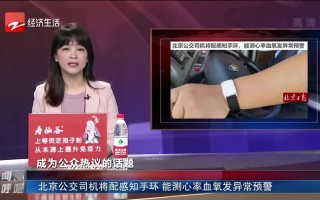妙优车3亿入局汽车后市场,汽车后市场到底多诱人?
河南商报记者 陈薇
包含汽车金融、维修、保养、保险等服务的汽车“后市场”,正吸引越来越多的汽车新零售平台的注意。
6月11日,妙优车发布“妙互联”汽车后市场智慧终端,其母公司北京聚融优合将斥资3亿元进军汽车后市场,并计划年内将妙互联智慧终端赋能至30000家门店。进军汽车后市场,妙优车认为对客户意味着更好的用车服务,而对其商业合作伙伴来说,也意味着更多的利润空间。
妙优车3亿元进军汽车后市场
6月11日,妙优车在郑州举办“妙互联”汽车后市场智慧终端上线发布会。妙互联是由妙优车母公司北京聚融优合技术有限公司,与深圳前海壹互联科技投资有限公司打造的互联网一站式汽车智能管理服务平台。
妙优车创始人古飞表示,“妙互联”将对汽车后市场进行覆盖,帮助郑州的用户更好地用车、开车、养车、换车。
“比方说你有洗车或者维修需求,妙互联可以提供附近洗车店或维修店的推荐匹配服务;如果你有卖车需求,妙互联也可以提供估值服务。”她说,妙互联使妙优车不仅是一个汽车新零售平台,更将成长为一个覆盖汽车整个生命周期的综合服务平台。
妙优车此次针对汽车后市场的“秒互联”将斥资3亿,妙互联智慧终端计划2019年不仅覆盖妙优车门店,还将覆盖客户所需的异业门店,比如连锁便利店、水吧、书吧等具备场景体验功能的经营场所,年内计划覆盖到3万家门店。
汽车后市场成汽车新零售平台争夺空间
汽车后市场时下已经成为很多汽车新零售平台争夺的生意。
经过几年的汽车电商大战,时下经营得比较好的汽车电商平台,基本都采取线上加线下的新零售模式:大家已经看到,汽车属于单价较高的商品,购买决策复杂,难以被完全电商化。因此,很多平台都选择依托门店,将服务进行线上线下交易的覆盖、新车与二手车业务的覆盖,用户汽车生命全周期服务的覆盖。
而用户汽车生命全周期,其实就包括很多汽车后市场的服务,诸如汽车金融、保险、保养、二手车评估等,在汽车销售利润渐薄的情况下,汽车后市场就成为掘金点。以在郑州开出线下门店的瓜子二手车为例,其在汽车后市场的服务的渗透率已经可以达到50%。 毛豆新车网也是依靠“0~1成首付开新车”的服务,让购车人拿到更大额度的贷款,从而在汽车金融方面获得回报。
古飞也认为,妙优车对汽车后市场的覆盖,也是为了给用户更好的用车体验,同时也满足妙优车合作伙伴的实际商业需求,通过流量池和智能营销服务,让合作伙伴享受更多的利润空间。 妙优车目前已通过汽车新零售在汽车服务行业积攒了合作伙伴资源,妙互联将积极连接金融机构及上游主流品牌厂商,让他们的产品让消费者更容易接触到。
(编辑 吕瑞天 华丽娟)
妙优车完成亿元级A轮融资,“直营+加盟”拓展门店建设
9月23日,北京聚融优合网络科技有限公司(“聚融优合”)宣布完成亿元级的A轮融资,投资方为中盛沃德(北京)基金管理有限公司。
引进的股权资金后,聚融优合将以旗下品牌“妙优车”为公司的主要投资和发展方向。据了解,妙优车是以“以租代购”的经营模式构建的汽车互联网平台,为用户提供一站式全方位汽车金融服务。
“以租代售的市场今年迎来了快速发展,二三线城市的用户对这种用车方式的接受度也开始高起来。”聚融优合董事长古飞向21世纪经济报道记者透露,将通过“直营+加盟”的方式在全国范围内进行实体店的建设,新一批的线下门店将在河北、山西、陕西、武汉等地区陆续落地。
2017年7月,妙优车在河南郑州开设了首家线下旗舰店。根据公司计划,聚融优合将在本年末实现300家实体店、2018年末实现1000家实体店的布局。
近年来,中国汽车金融市场快速发展,“互联网+汽车行业”的融合使得汽车市场从最初的汽车门户、汽车社区,发展到车联网、汽车电商、汽车金融平台等。
市场数据显示,2017年汽车金融的总估值达到1278亿元。今年上半年有13家汽车金融平台获128亿元融资,阿里、百度、腾讯、京东等互联网巨头纷纷试水汽车金融,汽车互联网金融迎来风口。
中盛沃德总裁陈楠介绍,妙优车在成立不到1年的实践中,经营区域就已覆盖6省48个城市,并为数万家庭提供了优质汽车服务。
“我们将运用资本的力量加速聚融优合完成1000家线下门店、100万购车用户、1亿平台用户的目标,与聚融优合共同打造‘产品+服务+客户’汽车生态链,共同绘制汽车金融服务领域的美好蓝图。”陈楠说。
更多内容请下载21财经APP
相关问答
哪位大佬,求帮忙!!青海实力厂家牛育肥公司哪家好,牛育肥...
[回答]很多公司太能忽悠了,合作了很多家,真的觉得河南国畜生物科技有限公司这家挺好,有一说一,说到的就能做到。汽车以租代购这两年在国内是一个新兴行业...
求懂车的老司机给我说说,迈腾和君威GS哪个好一点儿?
妙优车小优感谢您的邀请问答。大众迈腾和别克君威GS在同级车中可以说是商务和运动的代表作之一。大家都知道,在国内B级车市场中,迈腾的保有量非常惊人,为什么...








